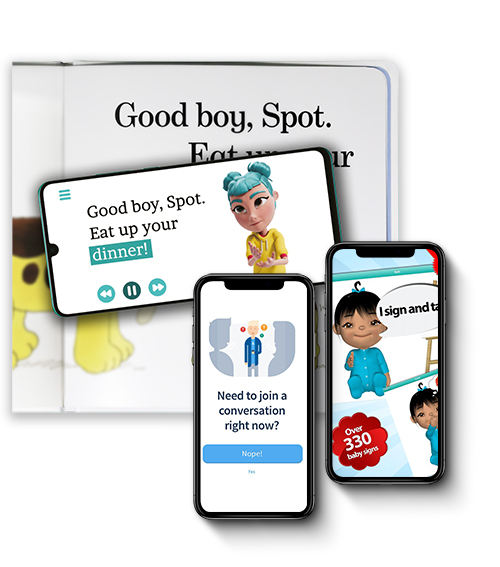Smart Apps to Improve Reading, Writing, and Communication Skills for Deaf Students
Research article  Open access |
Available online on: 20 January, 2020 |
Last update: 28 October, 2021
Open access |
Available online on: 20 January, 2020 |
Last update: 28 October, 2021
 Deaf children face much trouble to read and to write. In fact, according to recent studies they use a graphical strategy to store letters and words in their brains. Despite that the textual transcription that we use is essentially designed to encode a phonological based language. Consequently, the deaf still have problems with reading even into adulthood. Many researchers’ studies proved that the reading capability of deaf student is lower than that of hearing students. Conrad, who is a psychologist and researcher working with the deaf, has concluded that deaf students have a very slow learning process. According to Conrad, the reading capability of a deaf high-school graduate is similar to the reading capability of a 9-year-old hearing student.
Deaf children face much trouble to read and to write. In fact, according to recent studies they use a graphical strategy to store letters and words in their brains. Despite that the textual transcription that we use is essentially designed to encode a phonological based language. Consequently, the deaf still have problems with reading even into adulthood. Many researchers’ studies proved that the reading capability of deaf student is lower than that of hearing students. Conrad, who is a psychologist and researcher working with the deaf, has concluded that deaf students have a very slow learning process. According to Conrad, the reading capability of a deaf high-school graduate is similar to the reading capability of a 9-year-old hearing student.
Smart Apps technologies can enhance the classic pedagogical methods to improve the reading and writing skills for hearing impaired persons. Many Smart Apps exist in the market, however, in this paper we selected four applications that we consider useful for deaf communities.
Huawei StorySign: Learning to read is a big challenge for deaf children, especially if their teachers and parents do not know skills of sign language. Furthermore, understanding words by making a link between the graphical representation of the word, the visual gesture in sign language, and the meaning of the word is very hard for the young deaf. In order to overcome this difficulty, Huawei proposes an Android Application called StorySign. StorySign uses augmented reality to translate vocabulary of certain books using an AI approach and performed by a 3D avatar. The use of the application is not limited to deaf children, it can also be used by parents to learn sign language.
Baby Sign and Learn: The application proposes amazing videos containing sign language. Its purpose is to captivate the attention of deaf children by a cute animation in order to teach them sign language. In fact, learning with signed avatars and animations makes signing enjoyable. The application aids children to sign with colorful flashcards and a set of interactive quizzes. The application supports many sign languages: it allows the user to choose their preferred sign language.
AVA: A smart application that aims to make discussion within groups accessible by deaf persons. The application is designed to facilitate the communication between deaf and hearing people. In fact, assisting a conference, following a training or participating in a meeting with hearing persons, is a big deal for deaf people. Ava is designed to convert the speech of each member of the discussion group to text. The speech is picked up, in real time, using the phone’s microphone and then, displayed on smartphones’ screens with the name of the person who is talking. If a deaf person wants to use it with a group of hearing people, they can get their friends to connect to the AVA app – then, they will see a textual transcription of the discussion on the screen of their mobile.
Despite efforts, the number and quality of smart applications that are designed for the deaf is still insufficient to cover their needs. Especially in the field of education, which fits the 4th goal of the United Nations sustainable development goals. Finally, many works should be done to improve the use of smart applications for deaf children.
